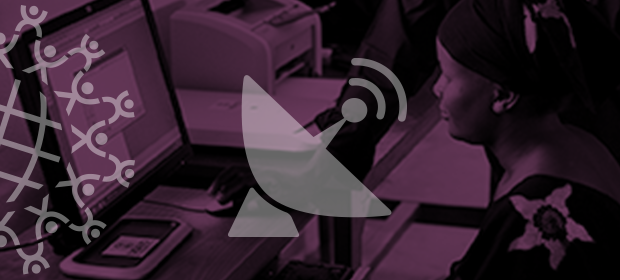Where We Work
See our interactive map


Software developers have the power to improve usability in the tools health workers use to report health data.
I’ve done my share of training district health officers and others in low-resource settings. I know that the vast majority of health workers who report data in district offices or health facilities in the low- and middle-income countries where IntraHealth International works are on congested 2G mobile networks in small towns.
Which means they’re waiting—waiting for web applications to load over poor Internet connections.
Complete and accurate data are essential for public health interventions, monitoring, and planning. Increasingly, web-based platforms are used to manage data on patients and the health workforce, and to store and create key health indicators.
Lighter, faster apps drive higher user engagement and retention.
But how do users access web-based health apps?
We may think that it’s through smartphones. That’s partially true. What our team has found is that the most common way people access health apps is on laptops and desktop computers, and those are connected to mobile phone networks via tethering to a smartphone or other mobile internet device. So while an ordinary web browser is often used instead of a smartphone to interact with apps, using the apps still relies on the mobile phone network.
Technology leaders like Google and Facebook have learned that lighter, faster apps drive higher user engagement and retention. As web developers, we have the power to create comfortable tools that extend productivity without getting in the way.
This is key to having better and more accurate data.
How do our core web-based apps perform on unreliable and slow network connections? Some core health apps perform poorly on mobile phone networks. I tested how our core health web apps perform in the field and in a desktop environment where we can degrade the network to appear as if its a 2G mobile network connection.
In a field test, in Lira, Uganda, the Ministry of Health’s DHIS2 system took 6 seconds to load the login page, and in a simulated environment, it took 10 seconds. iHRIS, the ministry’s human resource database built using IntraHealth’s open source software, took 1 second to load on location and 2 seconds in a simulated environment. Both services are hosted in the country, and both in the same data center.
While equitable access and connectivity are crucial issues to address, we can make apps faster and more reliable on poor networks now.
Web developers might love new technologies, but we need to be cognizant that load times matter.
Some apps perform better over poor and unreliable connections because the pages themselves are lighter. iHRIS is comparatively light relative to DHIS2—the webpage simply requires smaller payloads, which means that pages load faster.
Web developers might love new technologies, but we need to be cognizant that load times matter, and older, less-cool software, like basic HTML and CSS, can actually be better for our real users—health workers using laptops over poor 2G connections.
Software developers have a lot to do with improving usability in the tools health workers use to report health data. Requests for proposals should list clear requirements for vendors and deliverables. And those who manage developers should hold them accountable in providing great, frictionless experiences using apps in less-than-ideal conditions.
Don't miss Richard Stanley and other IntraHealth staff at the Global Digital Health Forum 2017 next week, December 4-6.
Get the latest updates from the blog and eNews




